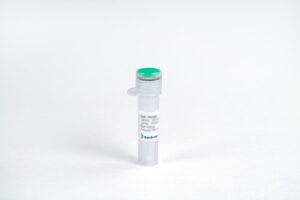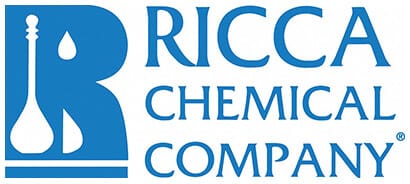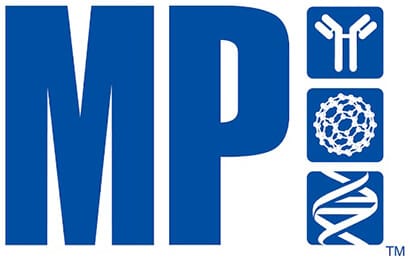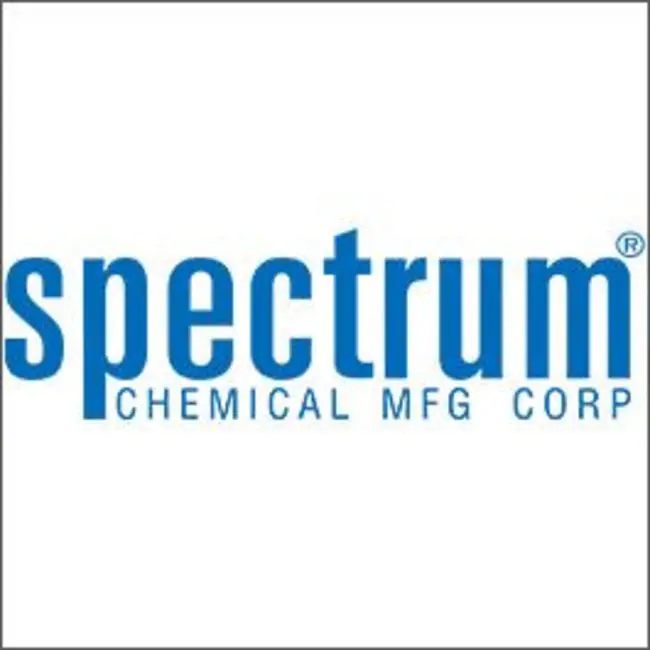20g
Showing all 25 results
-

BCA-1/CXCL13, Human
$155.25 Add to cart View Product DetailsCXCL13, also known as B-lymphocyte chemoattractant (BLC), is a CXC chemokine that is constitutively expressed in secondary lymphoid organs. BCA-1 cDNA encodes a protein of 109 amino acid residues with a leader sequence of 22 residues. Mature human BCA-1 shares 64% amino acid sequence similarity with the mouse protein and 23 – 34% amino acid sequence identity with other known CXC chemokines. Recombinant or chemically synthesized BCA-1 is a potent chemoattractant for B lymphocytes but not T lymphocytes, monocytes or neutrophils. BLR1, a G protein-coupled receptor originally isolated from Burkitt’s lymphoma cells, has now been shown to be the specific receptor for BCA-1. Among cells of the hematopoietic lineages, the expression of BLR1, now designated CXCR5, is restricted to B lymphocytes and a subpopulation of T helper memory cells. Mice lacking BLR1 have been shown to lack inguinal lymph nodes. These mice were also found to have impaired development of Peyer’s patches and defective formation of primary follicles and germinal centers in the spleen as a result of the inability of B lymphocytes to migrate into B cell areas.
-

BCMA, Human
$155.25 Add to cart View Product DetailsBCMA, a member of the TNF receptor superfamily, binds to BAFF and APRIL. BCMA is expressed on mature B-cells and other B-cell lines and plays an important role in B cell development, function and regulation. BCMA also has the capability to activate NF-kappaB and JNK. The human BCMA gene codes for a 184 amino acid type I transmembrane protein, which contains a 54 amino acid extracellular domain, a 23 amino acid transmembrane domain, and a 107 amino acid extracellular domain.
-

BD-2, Human
$159.56 Add to cart View Product DetailsDefensins (alpha and beta) are cationic peptides with a broad spectrum of antimicrobial activity that comprise an important arm of the innate immune system. The α-defensins are distinguished from the β-defensins by the pairing of their three disulfide bonds. To date, four human β-defensins have been identified; BD-1, BD-2, BD-3 and BD-4. β-defensins are expressed on some leukocytes and at epithelial surfaces. In addition to their direct antimicrobial activities, they are chemoattractant towards immature dendritic cells and memory T cells. The β-defensin proteins are expressed as the C-terminal portion of precursors and are released by proteolytic cleavage of a signal sequence and, in the case of BD-1 (36 a.a.), a propeptide region. β-defensins contain a six-cysteine motif that forms three intra-molecular disulfide bonds. β-Defensins are 3-5 kDa peptides ranging in size from 33-47 amino acid residues.
-

BD-3, Human
$163.88 Add to cart View Product DetailsDefensins (alpha and beta) are cationic peptides with a broad spectrum of antimicrobial activity that comprise an important arm of the innate immune system. The α-defensins are distinguished from the β-defensins by the pairing of their three disulfide bonds. To date, four human β-defensins have been identified; BD-1, BD-2, BD-3 and BD-4. β-defensins are expressed on some leukocytes and at epithelial surfaces. In addition to their direct antimicrobial activities, they are chemoattractant towards immature dendritic cells and memory T cells. The β-defensin proteins are expressed as the C-terminal portion of precursors and are released by proteolytic cleavage of a signal sequence and, in the case of BD-1 (36 a.a.), a propeptide region. β-defensins contain a six-cysteine motif that forms three intra-molecular disulfide bonds. β-Defensins are 3-5 kDa peptides ranging in size from 33-47 amino acid residues.
-

Eotaxin/CCL11, Human
$163.88 Add to cart View Product DetailsCCL11 is a potent eosinophil chemoattractant that was originally purified from bronchoalveolar lavage fluid of guinea pigs sensitized by aerosol challenge with ovalbumin. Human CCL11 cDNA encodes a 97 amino acid residue precursor protein from which the aminoterminal 23 amino acid residues are cleaved to generate the 74 amino acid residue mature human CCL11. At the protein sequence level, mature human CCL11 is approximately 60% identical to mature mouse and guinea pig CCL11. Human CCL11 is chemotactic for eosinophils, but not mononuclear cells or neutrophils. The CC chemokine receptor 3 (CCR3) has now been identified to be a specific human CCL11 receptor. CCR3 has also been shown to serve as a cofactor for a restricted subset of primary HIV viruses and binding of CCL11 to CCR3 inhibited infection by the HIV isolates.
-

Eotaxin/CCL11, Mouse
$168.19 Add to cart View Product DetailsCCL11 is a potent eosinophil chemoattractant that was originally purified from bronchoalveolar lavage fluid of guinea pigs sensitized by aerosol challenge with ovalbumin. Human CCL11 cDNA encodes a 97 amino acid residue precursor protein from which the aminoterminal 23 amino acid residues are cleaved to generate the 74 amino acid residue mature human CCL11. At the protein sequence level, mature human CCL11 is approximately 60% identical to mature mouse and guinea pig CCL11. Human CCL11 is chemotactic for eosinophils, but not mononuclear cells or neutrophils. The CC chemokine receptor 3 (CCR3) has now been identified to be a specific human CCL11 receptor. CCR3 has also been shown to serve as a cofactor for a restricted subset of primary HIV viruses and binding of CCL11 to CCR3 inhibited infection by the HIV isolates.
-

Exodus-2/CCL21, Human
$155.25 Add to cart View Product DetailsExodus-2/CCL21 is a novel CC chemokine discovered independently by three groups from the EST database, and shows 21-33% identity to other CC chemokines. Exodus-2 contains the four conserved cysteines characteristic of β chemokines plus two additional cysteines in its unusually long carboxyl terminal domain. It is expressed in lymph nodes of certain endothelial cells, and in the spleen and appendix. Exodus-2 chemoattracts T and B lymphocytes and inhibits hematopoiesis.
-

Fractalkine/CX3CL1, Human
$163.88 Add to cart View Product DetailsFractalkine, also named neurotactin, is a novel chemokine recently identified through bioinformatics. Fractalkine has a unique C-X3-C cysteine motif near the amino-terminus and is the first member of a fourth branch of the chemokine superfamily. Unlike other known chemokines, fractalkine is a type 1 membrane protein containing a chemokine domain tethered on a long mucin-like stalk. Human fractalkine cDNA encodes a 397 amino acid (aa) residue membrane protein with a 24 aa residue predicted signal peptide, a 76 aa residue chemokine domain, a 241 aa residue stalk region containing 17 degenerate mucin-like repeats, a 19 aa residue transmembrane segment and a 37 aa residue cytoplasmic domain. The extracellular domain of human fractalkine can be released, possibly by proteolysis at the dibasic cleavage site proximal to the membrane, to generate soluble fractalkine. The soluble chemokine domain of human fractalkine was reported to be chemotactic for T cells and monocytes while the soluble chemokine domain of mouse fractalkine was reported to chemoattract neutrophils and T-lymphocytes but not monocytes.
-

IFN-γ, Mouse
$43.13 Add to cart View Product DetailsSharing 41% sequence identity with human Interferon gamma (hIFN–γ), mouse IFN gamma (mIFN–γ)is a macrophage-activating factor.The active form of IFN–γ is an antiparallel dimer that sets off IFN–γ/JAK/STAT pathway. IFN–γ signaling does diverse biological functions primarily related to host defense and immune regulation, including antiviral and antibacterial defense, apoptosis, inflammation, and innate and acquired immunity.While IFN–γ–induced inflammatory cascade summons a variety of immune-related cell types, such as macrophages, natural killer (NK) cells and cytotoxic T lymphocytes (CTLs), IFN–γ is also implicated in resistance to NK cell and CTL responses and in immune escape in avariety of cancers.
-

IFN-λ1, Human
$155.25 Add to cart View Product DetailsIL-28A, IL-28B, and IL-29, also named interferon-λ2 (IFN-λ2), IFN-λ3, and IFN-λ1, respectively, are newly identified class II cytokine receptor ligands that are distantly related to members of the IL-10 family (11-13% aa sequence identity) and the type I IFN family (15-19% aa sequence identity). The expression of IL-28A, B, and IL-29 is induced by virus infection or double-stranded RNA. All three cytokines exert bioactivities that overlap those of type I IFNs, including antiviral activity and up-regulation of MHC class I antigen expression. The three proteins signal through the same heterodimeric receptor complex that is composed of the IL-10 receptor β (IL-10 Rβ) and a novel IL-28 receptor α (IL-28 Rα, also known as IFN-λR1). Ligand binding to the receptor complex induces Jak kinase activation and STAT1 and STAT2 tyrosine phosphorylation.
-

IFN-ω, Human
$68.14 Add to cart View Product DetailsInterferon-Omega (IFN-ω) coded by IFNW1 gene in human, is a number of the type I interferon family, which includes IFN-a, IFN-β, and IFN-ω. The IFNAR-1/IFNAR-2 receptor complex can help with the signal transduction, followed the antiviral or the antiproliferative actions. IFN-ω is derived from IFN-a/β and share 75% sequence with IFN-a. It has two intramolecular disulfide bonds which are crucial for activities. Mire-Sluis et al have described bioassays for IFN-α, IFN-β, and IFN-ω that exploit the ability of these factors to inhibit proliferation of TF-1 cells induced by GM-CSF. The bioassays can be used also with Epo and TF-1 cells, or Epo and Epo-transfected UT-7 cells.
-

IL-2, Mouse
$155.25 Add to cart View Product DetailsMature mouse IL-2 shares 56% and 73% aa sequence identity with human and rat IL-2, respectively. It shows strain-specific heterogeneity in an N-terminal region that contains a poly-glutamine stretch. Mouse and human IL-2 exhibit cross-species activity. The receptor for IL-2 consists of three subunits that are present on the cell surface in varying preformed complexes. The 55 kDa IL-2 R alpha is specific for IL-2 and binds with low affinity. The 75 kDa IL-2 R beta, which is also a component of the IL-15 receptor, binds IL-2 with intermediate affinity. The 64 kDa common gamma chain gamma c/IL-2 R gamma, which is shared with the receptors for IL-4, -7, -9, -15, and -21, does not independently interact with IL-2. Upon ligand binding, signal transduction is performed by both IL-2 R beta and gamma c. It drives resting T cells to proliferate and induces IL-2 and IL-2 R alpha synthesis. It contributes to T cell homeostasis by promoting the Fas-induced death of naïve CD4+ T cells but not activated CD4+ memory lymphocytes. IL-2 plays a central role in the expansion and maintenance of regulatory T cells, although it inhibits the development of Th17 polarized cells.
-

LIX/CXCL5 (92aa), Mouse
$169.05 Add to cart View Product DetailsThe mouse homolog of ENA-78 is called LIX. ENA-78/LIX is a CXC chemokine that signals through the CXCR2 receptor. It is expressed in monocytes, platelets, endothelial cells, and mast cells. ENA-78/LIX is a chemoattractant for neutrophils. The three naturally occurring variants of human ENA-78; ENA 5-78, ENA 9-78 and ENA 10-78, contain 74, 70, and 69 amino acid residues, respectively, and possess the same biological activity. ENA-78/LIX contains the four conserved cysteine residues present in CXC chemokines, and also contains the ‘ELR’ motif common to CXC chemokine that bind to the CXCR1 and CXCR2 receptors.
-

MIG/CXCL9, Human
$155.25 Add to cart View Product DetailsChemokine (C-X-C motif) ligand 9 (CXCL9), also known as monokine induced by interferon gamma (MIG), is a small cytokine belonging to the CXC chemokine family. The CXCL9 gene is induced in macrophages and in primary glial cells of the central nervous system specifically in response to IFNγ. CXCL9 has been shown to be a chemoattractant for activated T-lymphocytes and TIL but not for neutrophils or monocytes. The human CXCL9 cDNA encodes a 125 amino acid residue precursor protein with a 22 amino acid residue signal peptide that is cleaved to yield a 103 amino acid residue mature protein. CXCL9 has an extended carboxy-terminus containing greater than 50% basic amino acid residues and is larger than most other chemokines. A chemokine receptor (CXCR3) specific for CXCL9 and IP-10 has recently been cloned and shown to be highly expressed in IL-2-activated T-lymphocytes.
-

MIP-3α/CCL20, Mouse
$155.25 Add to cart View Product DetailsMacrophage Inflammatory Protein-3 (MIP-3α), also known as chemokine (C-C motif) ligand 20 (CCL20) or liver activation regulated chemokine (LARC), is a small cytokine belonging to the CC chemokine family. MIP-3α is expressed in the liver, lymph nodes, appendix, PBL and lung and can signal through the CCR6 receptor. It is strongly chemotactic for lymphocytes and weakly attracts neutrophils. MIP-3α is implicated in the formation and function of mucosal lymphoid tissues via chemoattraction of lymphocytes and dendritic cells toward the epithelial cells surrounding these tissues. Additionally, it promotes the adhesion of memory CD4+ T cells and inhibits colony formation of bone marrow myeloid immature progenitors.
-

PEDF, Human
$155.25 Add to cart View Product DetailsPEDF is a noninhibitory serpin with neurotrophic, anti-angiogenic, and anti-tumorigenic properties. It is a 50 kDa glycoprotein produced and secreted in many tissues throughout the body. A major component of the anti-angiogenic action of PEDF is the induction of apoptosis in proliferating endothelial cells. In addition, PEDF is able to inhibit the activity of angiogenic factors such as VEGF and FGF-2. The neuroprotective effects of PEDF are achieved through suppression of neuronal apoptosis induced by peroxide, glutamate, or other neurotoxins. The recent identification of a lipase-linked cell membrane receptor for PEDF (PEDF-R) that binds to PEDF with high affinity should facilitate further elucidation of the underlying mechanisms of this pluripotent serpin. To date, PEDF-R is the only signaling receptor known to be used by a serpin family member. The unique range of PEDF activities implicate it as a potential therapeutic agent for the treatment of vasculature related neurodegenerative diseases such as age-related macular degeneration (AMD) and proliferative diabetic retinopathy (PDR). PEDF also has the potential to be useful in the treatment of various angiogenesis-related diseases including a number of cancers.
-

RANTES/CCL5, Human
$163.88 Add to cart View Product DetailsCCL5 or RANTES (acronym for Regulated upon Activation, Normal T cell Expressed and presumably Secreted), was initially discovered by subtractive hybridization as a transcript expressed in T cells but not B cells. Eosinophilchemotactic activities released by thrombinstimulated human platelets have also been purified and found to be identical to RANTES. Besides T cells and platelets, RANTES has been reported to be produced by renal tubular epithelium, synovial fibroblasts and selected tumor cells.
-

TARC/CCL17, Human
$163.88 Add to cart View Product DetailsCCL17 is a novel CC chemokine recently identified using a signal sequence trap method. CCL17 cDNA encodes a highly basic 94 amino acid residue precursor protein with a 23 aa residue signal peptide that is cleaved to generate the 71 aa residue mature secreted protein. Among CC chemokine family members, CCL17 has approximately 24 – 29% amino acid sequence identity with RANTES, MIP-1α, MIP-1β, MCP-1, MCP-2, MCP-3 and I-309. The gene for human CCL17 has been mapped to chromosome 16q13 rather than chromosome 17 where the genes for many human CC chemokines are clustered. CCL17 is constitutively expressed in thymus, and at a lower level in lung, colon, and small intestine. CCL17 is also transiently expressed in stimulated peripheral blood mononuclear cells.
-

TECK/CCL25, Human
$163.88 Add to cart View Product DetailsCCL25 (thymus expressed chemokine) is a novel CC chemokine that is distantly related (approximately 20% amino acid sequence identity) to other CC chemokines. Mouse CCL25 cDNA has also been cloned and shown to encode a 144 aa protein that exhibits 49% aa sequence identity to human CCL25. The expresssion of human and mouse CCL25 was shown to be highly restricted to the thymus and small intestine. Although dendritic cells have been demonstrated to be the source of CCL25 production in the thymus, dendritic cells derived from bone marrow do not express CCL25.
-

TFF3, Human
$155.25 Add to cart View Product DetailsThe Trefoil Factor peptides (TFF1, TFF2 and TFF3) are secreted in the gastrointestinal tract, and appear to play an important role in intestinal mucosal defense and repair. TFF-3 is expressed by goblet cells and in the uterus, and has also been shown to express in certain cancers, including colorectal, hepatocellular, and in biliary tumors. TFF3 may be useful as a molecular marker for certain types of cancer, but its role, if any, in tumorigenesis is unknown. TFF3 also promotes airway epithelial cell migration and differentiation.
-

TNF-α, Mouse
$155.25 Add to cart View Product DetailsTumor necrosis factor alpha (TNF-α) is produced by neutrophils, activated lymphocytes, macrophages, NK cells, LAK cells, astrocytes endothelial cells, smooth muscle cells and some transformed cells. Mouse TNF-α occurs as a membrane-anchored form. The naturally-occurring form of TNF-α is glycosylated, but non-glycosylated recombinant TNF-α has comparable biological activity. The biologically active native form of TNF-α is reportedly a trimer. Human and mouse TNF-α show approximately 79% homology at the amino acid level and crossreactivity between the two species.
-

TNF-α, Mouse (P. pastoris-expressed)
$86.25 Add to cart View Product DetailsTumor necrosis factor alpha (TNF-α) is produced by neutrophils, activated lymphocytes, macrophages, NK cells, LAK cells, astrocytes endothelial cells, smooth muscle cells and some transformed cells. Mouse TNF-α occurs as a membrane-anchored form. The naturally-occurring form of TNF-α is glycosylated, but non-glycosylated recombinant TNF-α has comparable biological activity. The biologically active native form of TNF-α is reportedly a trimer. Human and mouse TNF-α show approximately 79% homology at the amino acid level and crossreactivity between the two species.
-

United Scientific® HEXAGONAL MASS, 20G
$0.77 Add to cart View Product DetailsHEXAGONAL MASS, 20G
-

United Scientific® INDIVIDUAL BRASS MASS, 20G
$2.62 Add to cart View Product DetailsINDIVIDUAL BRASS MASS, 20G
-

United Scientific® INDIVIDUAL HOOKED BRASS MASS, 20G
$1.38 Add to cart View Product DetailsINDIVIDUAL HOOKED BRASS MASS, 20G






